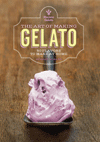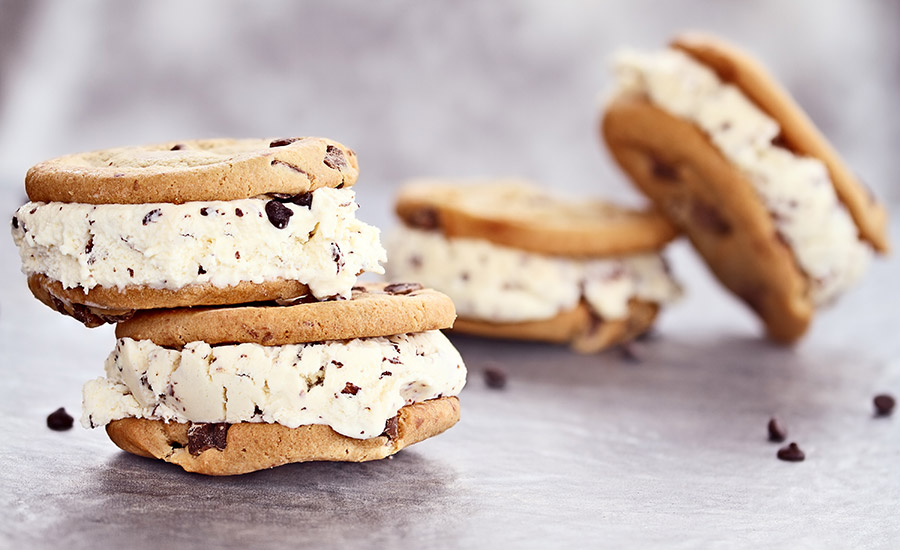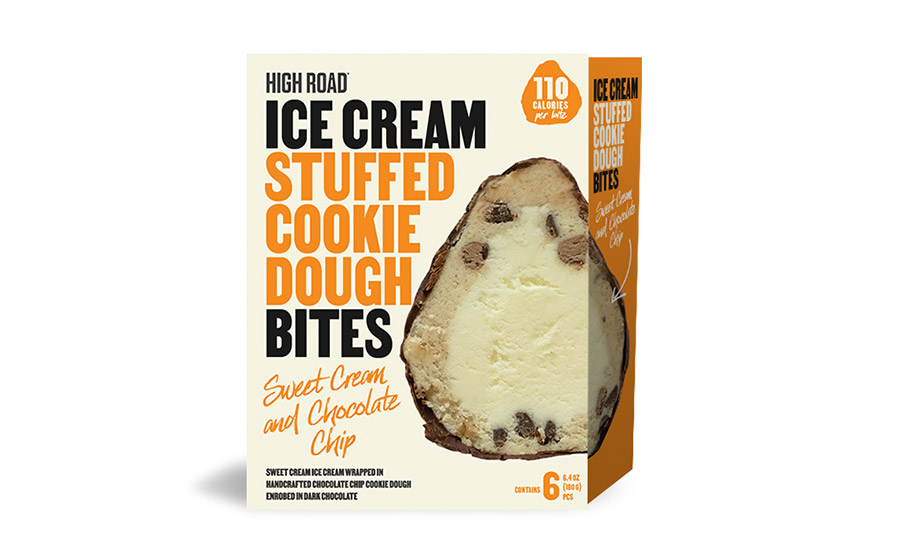Keep the ice cream category growing
By following certain trends, ice cream and frozen novelty manufacturers could help sustain the huge retail sales bump they achieved during the coronavirus pandemic.










Ice cream and frozen novelties shows no signs of cooling down. At retail, sales of the comfort food staples soared during early pandemic purchase sprees, and that trend has sustained over the past year. According to data from Chicago-based market research firm IRI, ice cream’s retail dollar sales jumped $16.8% over the 52 weeks ending Dec. 27, 2020. Unit sales over the same time period were up 12%.
It’s an even brighter story for ice cream’s sister category: frozen novelties. Dollar sales increased 18.1%, and unit sales rose 10.6%.
“Particularly over the last 10 months, we’ve seen a shift in consumer buying behavior and a surge in demand for ice cream as many of us were seeking at-home comfort from our favorite foods,” explains Katie Cline, vice president of marketing at Bubbies Homemade Ice Cream and Desserts Inc., Aiea, Hawaii.
“And ice cream is one of the most accessible and satisfying ways to indulge.”
Prior to the coronavirus pandemic, the “mature” ice cream category grew at a compound annual growth rate of only 2.4% between 2014 and 2019, notes the Packaged Facts division of Rockville, Md.-based MarketResearch.com in its “U.S. Food Market Outlook 2020: Home Cooking, Grocery Shopping, & Food Trends in the Age of Coronavirus” report. The company predicts the category’s growth will normalize by 2022.
“Dollar growth will be driven by consumption of higher-priced items like super-premium and premium ice cream, gelato and specialty novelties,” Packaged Facts says.
Seeking comfort
The ice cream category lost some customers in recent years as consumers sought out healthier snacks or dairy-free options. However, the coronavirus pandemic brought many of them back to the freezer aisle, notes Luconda Dager, president of Utica, Ohio-based Velvet Ice Cream.
“With quarantine still prevalent in some regions of the country, ‘anytime eating’ in the home has become common, with ice cream being one of the first products consumers reach for,” she says.
Part of the reason that ice cream has attracted more purchasers during the pandemic is its “fun and exciting” reputation — a contrast to many people’s day-to-day lives in this era, says Cline.
“So many consumers are still facing somber situations, and as a category, we have the opportunity to help infuse small moments of joy, pleasure and delight into their days,” she adds.
A contributing factor for some ice cream companies’ sales increases was e-commerce, says Sara Schramm, marketing brand manager for Blue Bell Creameries, Brenham, Texas. Many customers turned to ordering familiar favorites online, driving up sales in the category.
“No one could have predicted that the ice cream category would grow as much as it did within a year’s time,” she adds.
But will all that growth stick around in the near future, as consumers turn back to pre-pandemic eating trends? Cline thinks so.
“I anticipate that consumer behavior will remain similar this year, given that we’re still facing the pandemic,” she explains. “Research shows that many buying habits that emerged in 2020 are here to stay even post-COVID, and the ice cream category is no different.”
Nicki Schroeder, co-founder and chief marketing officer for High Road Craft Brands, Marietta, Ga., agrees.
“I do expect the trend to continue beyond the pandemic,” she says. “I think it is one of those affordable luxuries that consumers did not realize they needed until they needed it — and sometimes just one spoonful will do.”
Escaping with flavors
The pandemic also has influenced consumers to try new and inventive ice cream and frozen novelty products, says Cline. This desire for novelty brought many new customers to Bubbies’ mochi ice cream products.
“Our products offer an exciting experience beyond a traditional pint through texture and culinary-inspired flavors,” she points out. “So in addition to dessert, we know many of our fans look at our ice cream as snacks, opening up a new use case throughout the day.”
According to Schroeder, flavor exploration has offered consumers an “escape” during a year in which they have not been able to travel.
“I think about our new Strawberry & Espelette Swirl ice cream that pays homage to a trip to Lyon a few years back,” she elaborates. “The flavor perfectly honors the combination of the spice of the Espelette pepper from that region and the ripe, fruity strawberry.”
For its part, Alden’s Organic is launching ice cream bars inspired by classic summer flavors to tap into the flavor exploration and nostalgia trends, notes Joelle Simmons, senior vice president of sales and marketing for the Eugene, Ore.-based company.
The bars will be available in Root Beer Float (root beer sherbet swirled with organic vanilla ice cream) and two nondairy varieties: Horchata and Strawberry Lemonade.
Along with flavor exploration, many consumers are engaging in texture exploration. In fact, Packaged Facts remarks that texturally unique offerings are likely to be a growth driver in the category in coming years.
“You’re seeing an increase in crunchy, creamy and cakelike inclusions across the category because shoppers are demanding it,” Cline notes. “Texture makes the experience of ice cream more fun and interesting to eat, and it’s why mochi continues to rise in popularity.”
For its part, Yasso Frozen Greek Yogurt, Boulder, Colo., is hopping on the texture trend by introducing Yasso Poppables, says Lisa Larkin, category and customer marketing manager.
“These are creamy frozen Greek yogurt bites enveloped in chocolatey coating and quinoa crunch,” Larkin says. “[There are] 60 calories per Yasso Poppable, and [they are] available in Vanilla, Mint, Coffee and Sea Salt Caramel flavors.”
Indulging a little
While at home, many consumers have gravitated toward healthy-lifestyle products. However, within that desire for wellness, there is still a huge interest in indulgence, remarks Schroeder.
“There are a lot of choices consumers can make in the better-for-you space, and we see they’re indulging in higher-fat real dairy and clean ingredient decks,” she adds.
According to Schramm, the pandemic has further brought out the indulgence trend.
“Indulgence and decadence have always been a core of what makes ice cream in consumers’ minds,” she explains. “Throughout the pandemic, many consumers decided to splurge and treat themselves to good old-fashioned ice cream. We anticipate this trend to continue.”
Velvet Ice Cream jumped on the indulgence trend with the planned introduction of new premium pint flavors. The company is launching six new flavors — Banana Cream Pie, Caramel Toffee Crunch, Cookie Dough Extreme, Mint Chocolate Chip, Red Velvet Cake and Strawberry Cheesecake — this spring, says Dager.
And the Edy’s and Dreyer’s brands of Dreyer’s Grand Ice Cream Inc. (owned by North Yorkshire, U.K.-based Froneri International Ltd.,a joint venture Nestlé created in 2016 with PAI Partners), debuted the Rocky Road collection — a line of indulgent ice creams — in February.
“The new Rocky Road collection is designed to send ice cream lovers on a treasure hunt of indulgent mix-ins — full of flavor, decadence and texture. It’s indulgence that the whole family can enjoy,” said Julianne Feder, senior associate brand manager for Dreyer's Grand Ice Cream.
The line includes the established flavors of Original Rocky Road, Mocha Almond Avenue and Chocolate Peanut Butter Park, along with new additions Salted Caramel Pretzel Path, Brownie Brick Road and Cookie Cobblestone.
Ben & Jerry’s, Burlington, Vt., also jumped on the indulgence trend with the introduction of its Topped line of ice cream covered with a layer of chocolate ganache. The pints come in seven flavors: Whiskey Biz, Chocolate Caramel Cookie Dough, PB Over the Top, Salted Caramel Brownie, Strawberry Topped Tart, Thick Mint and Tiramisu.
"We wanted to dial up the indulgence level with this unique line of flavors, which entirely challenges how you eat this ice cream," said Dena Wimette, senior innovation manager for Ben & Jerry’s. "We started with sundaes and all the things you add to sundaes to make them great as our inspiration.”
On the flip side, better-for-you products are still popular due to the idea of “permissible indulgence,” notes Larkin. Better-for-you novelties, with their portion-controlled promise of indulgence, are growing even faster than the larger ice cream segment.
This growth “is stemming from brands that are positioned as simple, clean and wholesome options within novelties,” she explains.
And when they choose to indulge in ice cream, some customers also are looking for functional benefits such as probiotics and added protein, Simmons adds.
Less is more
Ice cream and frozen novelties have also shifted a bit from their dessert food reputation and are seeing new usage occasions such as snacking, explains Simmons. And with that comes a consumer desire for portion-controlled packaging.
“Consumers are particularly looking for portion- and calorie-controlled options that satisfy a craving but that they feel good about eating or serving their families,” she says. “Alden’s Organic offers a variety of certified-organic snack-size options — from portion-controlled mini squares to low-calorie bars.”
Alden’s recently began packaging three of its most popular frozen novelties in a single-serve format: its Classic Fudge bar, its Old School Vanilla ice cream sandwich and its Dairy Free Vanilla Bean Round Sammie. The company says the new packaging was developed to help fill a gap for consumers looking for frozen organic snacking options on the go.
“We have steadily seen a growing demand for our snackable bars and sammies,” Simmons said. “The new single serve provides the right merchandising vehicle to offer these popular items in expanding channels such as convenience and drug.”
High Road Craft Brands also introduced new packaging, says Schroeder. It “downsized” its packaging from a two-pack to a single-serve format in response to the grab-and-go trend. The company re-examined the size of its Wallops! brand of frozen novelties, too.
“We got feedback that our Wallops! may be too large and perhaps a bit confusing in the freezer. We decided to use the timing to reimagine what they could be in a future state,” she explains. “We turned them into Ice Cream Stuffed Cookie Dough Bites. We made them smaller (110 calories or less) and put six per pack and put them under the High Road family of products.”
Bubbies also introduced pre-packaged single-serve versions of its mochi ice cream last year, though its motivations were a bit different. The company’s self-serve ice cream freezers, which are located within select retail stores, previously contained loose mochi ice cream that consumers could mix and match. However, with the coronavirus pandemic, retailers were concerned about a cross-contamination risk.
“Stores began selling our mochi ice cream in pre-packaged six-counts due to caution for cross-contamination, taking away from the experience of being able to mix and match flavors like before,” Cline points out. “We worked quickly to find a new solution and get the single-serve option back online with special individually wrapped packaging.”
The new packaging spans the company’s Mango, Green Tea, Strawberry, Passion Fruit, Triple Chocolate, Pistachio, Blood Orange and Vanilla flavors — as well as Vegan Strawberry and Vegan Chocolate varieties.
Life after the pandemic
With the rollout of various coronavirus vaccines, it looks like life will begin to normalize in 2021. Key to retaining the new ice cream purchasers gained during the pandemic will be for retailers to stock “products that will easily fit into consumer’s wellness trends and finding new ways and occasions for consumers to shop the ice cream category,” says Larkin.
This should include harnessing the snacking trend and ensuring different product formats are available, she adds.
“A big challenge will be maintaining the size and growth of the ice cream category that we’ve seen this past year,” says Schramm.
Looking for a reprint of this article?
From high-res PDFs to custom plaques, order your copy today!














